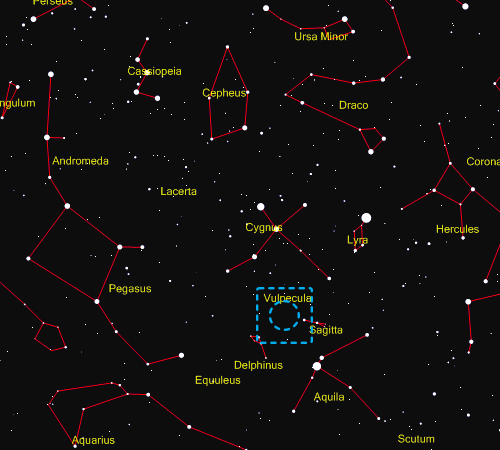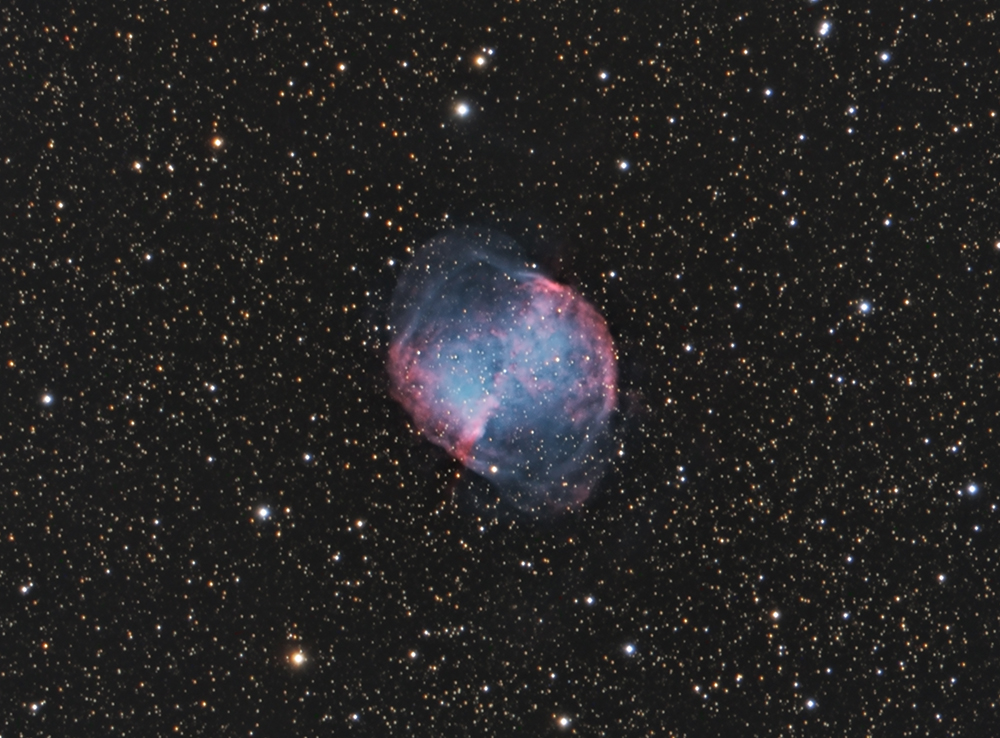The Dumbbell Nebula was first recorded by Charles Messier in 1764, number twenty seven in his catalogue, it is also known as M27. It is classified as a ‘planetary nebula’, the name invented twenty years later, in 1784, by William Herschel for this class of objects because he found them to resemble his newly discovered planet, Uranus. So, while called a planetary nebula, it has nothing to do with any planet. It was the first planetary nebula ever to be discovered. There are several other names by which this nebula is known; The Diabolo and The Apple Core being two such examples, both on account of the distinctive shapes within the nebula.
Like all planetary nebulae, the Dumbbell Nebula was formed by its central star, now a white dwarf, exhausting its hydrogen fuel, becoming a red giant and ejecting its outer layers. This happened very recently, between 10,000 and 15,000 years ago. The expanding gas shell is excited by high-energy radiation from that central white dwarf star, forming the visible nebula. The star is so much fainter than the nebula because it emits mainly in the non-visible part of the spectrum.
The central white dwarf of the Dumbbell Nebula contains an estimated 60% of the Sun’s mass. It is about 5% of the Sun’s diameter, making it the largest white dwarf known. With a surface temperature of 85,000K, this blue-white star has a spectral type of O7. The high-energy ultraviolet radiation from its extremely hot surface is absorbed by the nebula’s gas and re-emitted as visible light. Most of this light is emitted at only one wavelength, 500.7nm, which corresponds to the blue-greenish spectral line of doubly ionised oxygen (OIII). |


